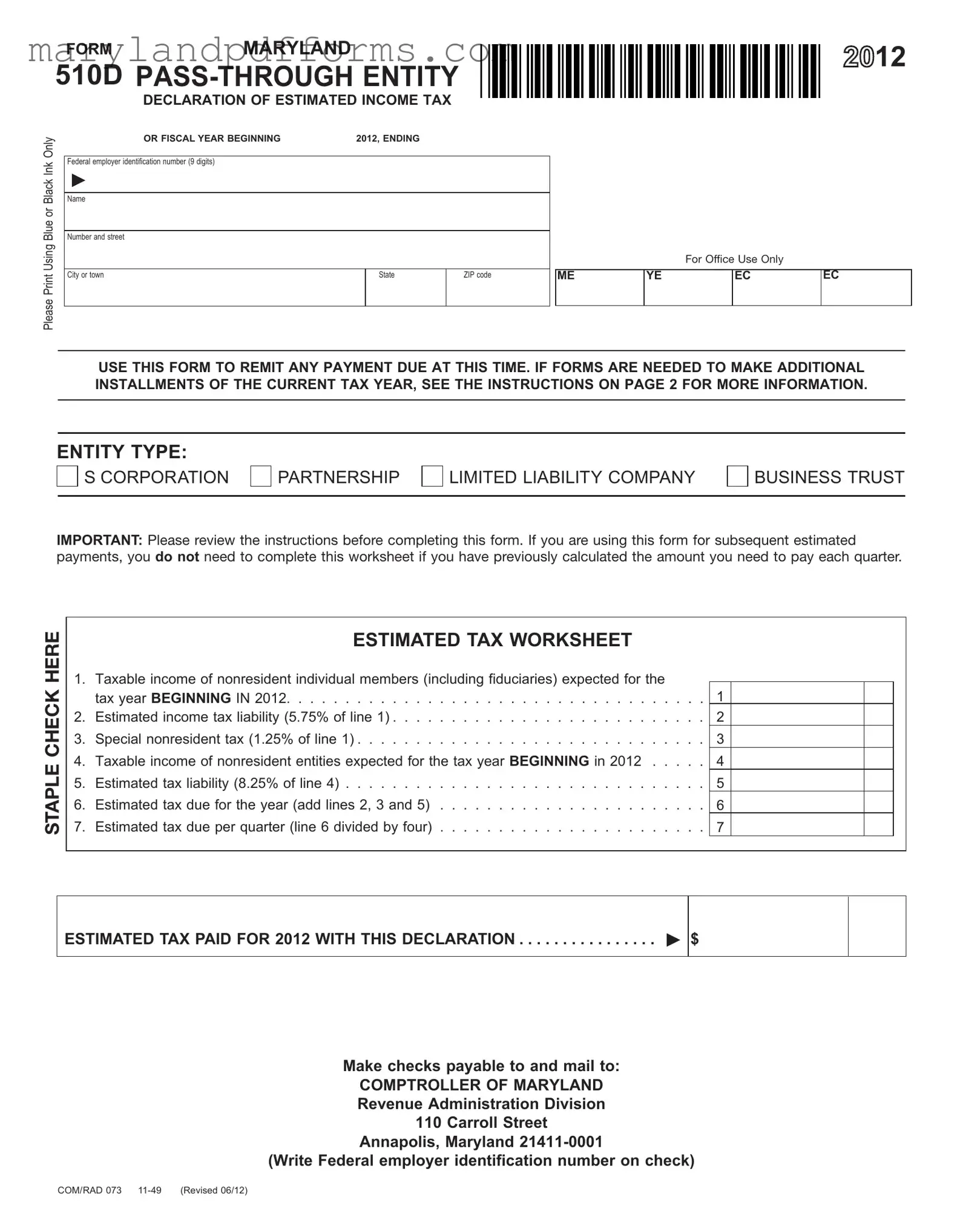The Maryland 510D form is designed for pass-through entities (PTEs) to declare and remit estimated income tax on behalf of their nonresident members. This includes individuals, fiduciaries, and entities that are not registered to do business in Maryland. By using this form, PTEs ensure that they comply with state tax obligations and facilitate tax payments for their members.
Any pass-through entity, such as an S corporation, partnership, limited liability company (LLC), or business trust, must file the Maryland 510D form if they have nonresident members. These entities are responsible for paying estimated taxes on behalf of their nonresident members, which includes individuals and entities not formed under Maryland law.
What are the tax rates applicable to nonresident members?
The tax rates for nonresident members vary based on their classification:
-
For nonresident individual members and fiduciaries, the tax rate is 5.75% of their distributive or pro rata share of income.
-
For nonresident entity members, the tax rate is 8.25% of their distributive or pro rata share of income.
It is essential to stay updated, as these rates may change with new legislation.
The form must be filed on specific due dates, which vary depending on the type of entity. For S corporations, the form is due on or before the 15th day of the 4th, 6th, 9th, and 12th months following the start of the tax year. For partnerships, LLCs, and business trusts, the due dates are the 4th, 6th, 9th, and 13th months after the tax year begins.
What happens if the estimated tax exceeds $1,000?
If the estimated tax for the year is expected to exceed $1,000, the PTE is required to make quarterly estimated payments. To avoid penalties and interest, the total estimated payments must be at least 90% of the current year’s tax or 110% of the prior year’s tax. This ensures that the entity meets its tax obligations in a timely manner.
How can a PTE amend its estimated tax payment?
If a PTE needs to amend its estimated tax, it should recalculate the required amount using the provided worksheet. The next installment should reflect any adjustments for previous underpayments or overpayments. Remaining installments must be at least 25% of the amended estimated tax due for the year, ensuring that the entity remains compliant.
When completing the form, the PTE must provide specific information, including:
-
The entity's name and address.
-
The federal employer identification number (FEIN).
-
The tax year beginning and ending dates.
Accurate and complete information is crucial for proper processing and compliance with state tax laws.
The completed form, along with any payment, should be mailed to:
Comptroller of Maryland
Revenue Administration Division
110 Carroll Street
Annapolis, MD 21411-0001
Ensure that the FEIN and relevant tax information are included on the payment to avoid any processing delays.
